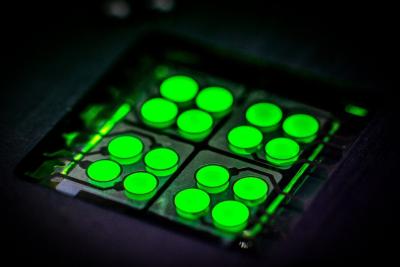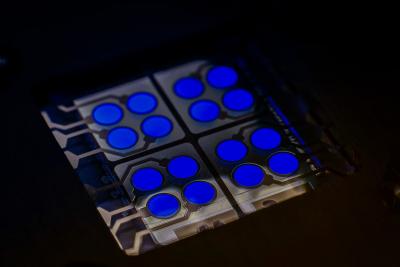According to reports, Samsung Display acquired OLED material developer Cynora, for about $300 million. Samsung acquires just the IP and technology, and Cynora terminated its entire workforce a couple of weeks ago. Samsung is already an investor in Cynora, and so is LGD.

Cynora has been low on cash (its last financing round was in 2019), according to reports, and did not manage to find new investors, and so the company opted to be sold to Samsung. The reported sum seems to be rather high for an emergency exit, and some later reports quotes much lower sums, perhaps even around $30 million or so.
Cynora has been established almost 20 years ago, and the company started out to develop copper-based OLED compounds, in addition to developing flexible OLED and OPV technologies.
The company later changed direction and focused on TADF OLED emitters, specifically aiming to develop an efficient blue emitter. The company hoped to have a commercial blue by 2017, but it was not successful.
In 2020 Cynora announced its first commercial product, a fluorescent blue emitter that is 15% more efficient that current fluorescent blue emitters on the market. Cynora branded its new material as cyBlueBooster. We are not aware of any companies that actually adopted this new material. In March 2020 we posted an interview with Cynora's CEO to discuss this new material.

In 2021, Cynora announced that it achieved a breakthrough in its deep-green TADF material, which it brands as cyUltimateGreen. Cynora started to offer test kits of the new deep-green emitter and Cynora promised it will follow soon with a deep-blue TADF solution. The company did not provide any updates since.
Comments
300 Mio USD for a non-vallidated and non-commercial technology is not realistic. The same guys (Samsung) acquired Novaled for about the same ammount of money, but with a production-proven technology and commercial sales of 40 Mio €. And they did not lay off the workforce, sinde the needed them to sustain material supply and further development
30 Mio € to enrich the IP portfolio of Samsung seems more a realistic number.


Sad to see an OLED materials developer go under but I think the writing is on the wall for TADF emitters, as I doubt they will ever reach the colour purity the industry demands. Phosphorescence and hyperfluorescence (which uses TADF molecules in combination with regular fluorescent emitters) seem to be the future.